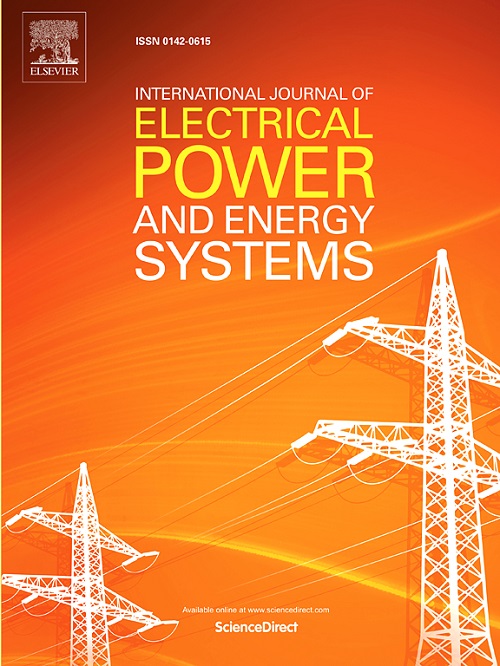A multi-modal feature combination mechanism for identification of harmonic load in distribution networks based on artificial intelligence models
IF 5
2区 工程技术
Q1 ENGINEERING, ELECTRICAL & ELECTRONIC
International Journal of Electrical Power & Energy Systems
Pub Date : 2025-02-14
DOI:10.1016/j.ijepes.2025.110519
引用次数: 0
Abstract
The challenge of harmonic pollution in active distribution networks is inherently complex, a data-driven approach being necessitated to comprehensively capture the nonlinear and non-stationary characteristics of harmonic power sequence signals, thereby enhancing recognition accuracy. To achieve intelligent identification of harmonic loads within distribution networks, an innovative methodology that integrates parameter-optimized variational mode decomposition with sequential neural networks is proposed. Firstly, based on IEEE Std. 1459-2010 power theory, the harmonic apparent power distortion caused by nonlinear loads is calculated. Secondly, using an optimization algorithm, the penalty parameter and the number of intrinsic mode functions in variational mode decomposition are fine-tuned to decompose the harmonic power sequence and extract intrinsic mode functions. The most suitable intrinsic mode sequences are selected as input features for sequential neural networks training. Finally, a multi-modal feature tensor combination mechanism that integrates reshaped vector layers into the sequential neural networks architecture is introduced, enabling adaptive extraction of spatial–temporal characteristics and significantly improving the accuracy of harmonic load identification without prior knowledge of their spectral features.

求助全文
约1分钟内获得全文
求助全文
来源期刊
CiteScore
12.10
自引率
17.30%
发文量
1022
审稿时长
51 days
期刊介绍:
The journal covers theoretical developments in electrical power and energy systems and their applications. The coverage embraces: generation and network planning; reliability; long and short term operation; expert systems; neural networks; object oriented systems; system control centres; database and information systems; stock and parameter estimation; system security and adequacy; network theory, modelling and computation; small and large system dynamics; dynamic model identification; on-line control including load and switching control; protection; distribution systems; energy economics; impact of non-conventional systems; and man-machine interfaces.
As well as original research papers, the journal publishes short contributions, book reviews and conference reports. All papers are peer-reviewed by at least two referees.

 求助内容:
求助内容: 应助结果提醒方式:
应助结果提醒方式:


